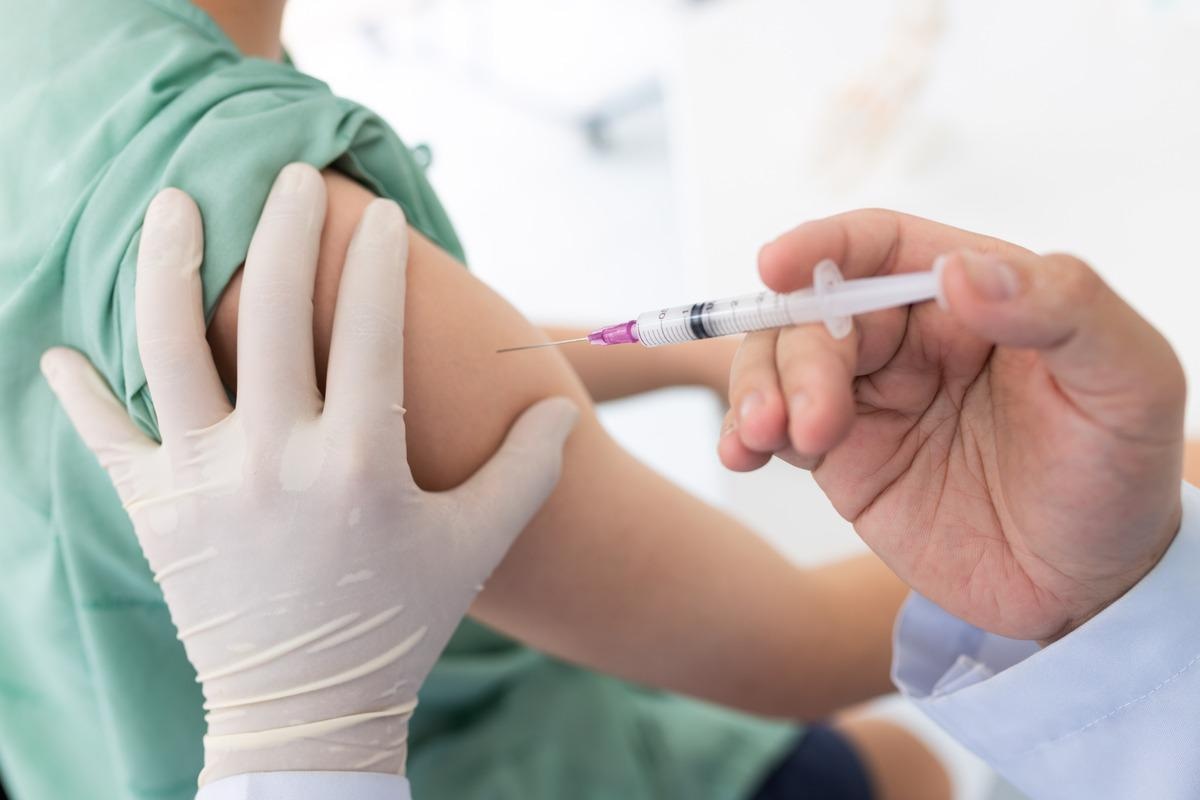In a recent article posted to the medRxiv* preprint server, researchers assessed the factors influencing the anti-severe acute respiratory syndrome coronavirus 2 (SARS-CoV-2) spike (S) antibodies after SARS-CoV-2 BNT162b2 vaccination.

Background
Coronavirus disease 2019 (COVID-19) has been the world's greatest respiratory virus pandemic of this century, with over 505 million SARS-CoV-2 cases and 6.2 million fatalities worldwide, including over 100,000 deaths in the United Kingdom (UK).
SARS-CoV-2 vaccines, like the messenger ribonucleic acid (mRNA) vaccines (BNT162b2) and the chimpanzee adenovirus vectored vaccine ChAdOx-1 nCoV-19 AZD1222, became available by the end of 2020. The management of COVID-19 necessitates a thorough understanding of immune responses to SARS-CoV-2 vaccinations.
The SARS-CoV-2 infection and reinfection evaluation (SIREN) is a longitudinal analysis involving nearly 44,000 healthcare personnel in the UK. It was established to determine the influence of SARS-CoV-2 infection and reinfection on immunity, but it has since been used for in-depth investigation of COVID-19 vaccination responses.
About the study
The goal of the present study was to delve into the factors that impact antibody response to the SARS-CoV-2 BNT162b2 vaccine.
In a cross-sectional study, the investigators examined anti-SARS-CoV-2 S binding antibodies in blood samples from healthcare professionals after one or two BNT162b2 vaccine shots from the SIREN study. After BNT162b2 vaccine doses 1 and 2, the post-vaccination period was limited to ≥3 weeks and ≥3 weeks, respectively.
Anti-S titers following SARS-CoV-2 infection or vaccination were the main outcome of the current study, with vaccine dose, prior COVID-19, dosing gap, gender, age, comorbidities, the timing between vaccination and sample collection, and ethnicity acting as explanatory variables. Further, the authors also performed a multivariable linear regression.
Results
The study results indicated that among the 5,871 BNT162b2 vaccinated participants included in this investigation, 3,989 individuals were the recipients of the first BNT162b2 vaccine shot, and 1,882 belonged to the post-dose 2 category. After BNT162b2 dose 1, 99.65% of SARS-CoV-2 infection-naive subjects were seroconverted, and >99.9% were seroconverted following dose 2.
Further, after dose 1, the geometric mean anti-S titer in the naive group was 75.48 BAU/ml, and following dose 2, it was 7,049 BAU/ml. Anti-S titers were elevated in 7,131 individuals who had previously been infected with SARS-CoV-2, with 2,111 BAU/ml after dose 1 and 16,052 BAU/ml following dose 2, respectively, which rose with the time between SARS-CoV-2 infection and COVID-19 vaccination: three months (1,970) versus nine months (13,759). After two vaccination doses, anti-S titers were substantially greater than after SARS-CoV-2 infection alone.
Longer dosing intervals boosted antibody response following dose 2 across all age categories: individuals with longer intervals, i.e., more than 10 weeks, had an 11-fold greater antibody response than those with shorter intervals. Additionally, the mean antibody titers of the younger subjects were >2.2-fold greater.
Multivariable regression modeling confirmed the aforementioned data. It further discovered elevated anti-SARS-CoV-2 S antibody titers in females and members of ethnic minorities, yet lower titers in immunocompromised subjects.
Conclusions
The study findings revealed that repeated SARS-CoV-2 antigenic exposure boosts antibody response, with subjects with three antigenic exposures having the highest anti-S titers. Anti-S responses were similar in individuals with only one antigen exposure, regardless of whether it came from SARS-CoV-2 vaccination or infection.
Anti-S titers were significantly greater after two SARS-CoV-2 vaccine shots than a single COVID-19 history. Longer intervals between consecutive vaccination doses, particularly the initial vaccine dose after infection, were related to a higher antibody response in the current subjects, as documented by others. The investigators discovered a link between age and immunosuppression, with younger individuals having greater anti-S titers and immunosuppressed people exhibiting lower titers.
The current dataset has given a cross-sectional examination of determinants of anti-SARS-CoV-2 S antibody response post-COVID-19 vaccination that is significantly robust. Due to the use of a fully quantitative anti-SARS-CoV-2 receptor-binding domain (RBD) test reported in BAU/ml comparable to the first World Health Organization (WHO) worldwide COVID-19 immunoglobulin standard, this study allowed for a meaningful comparison of post-vaccination responses in various cohorts and across different studies.
Moreover, the authors stated that the SIREN cohort continues to offer information on COVID-19 vaccine efficacy and responses, SARS-CoV-2 reinfections, and, most recently, vaccine breakthrough infections. With declining immunity and heightened vaccine breakthrough infections, this cohort will be critical in identifying why individuals acquire vaccine breakthrough infections and any potential protective correlations.
Overall, the present study illustrated that the magnitude of the antibody response post-COVID-19 vaccination was influenced by the number of SARS-CoV-2 antigen exposures and the time between vaccinations, with consequences for long-term immunity and post-booster antibody responses.
*Important notice
medRxiv publishes preliminary scientific reports that are not peer-reviewed and, therefore, should not be regarded as conclusive, guide clinical practice/health-related behavior, or treated as established information.
- Ashley David Otter, et al. (2022). Determinants of SARS-CoV-2 anti-spike antibody levels following BNT162b2 vaccination: cross-sectional analysis of 6,000 SIREN study participants. medRxiv. doi: https://doi.org/10.1101/2022.04.21.22274025 https://www.medrxiv.org/content/10.1101/2022.04.21.22274025v1
Posted in: Medical Science News | Medical Research News | Disease/Infection News
Tags: Adenovirus, Antibodies, Antibody, Antigen, Blood, Chimpanzee, Coronavirus, Coronavirus Disease COVID-19, covid-19, Efficacy, Healthcare, immunity, Immunoglobulin, Immunosuppression, Pandemic, Receptor, Respiratory, Respiratory Virus, Ribonucleic Acid, SARS, SARS-CoV-2, Severe Acute Respiratory, Severe Acute Respiratory Syndrome, Syndrome, Vaccine, Virus

Written by
Shanet Susan Alex
Shanet Susan Alex, a medical writer, based in Kerala, India, is a Doctor of Pharmacy graduate from Kerala University of Health Sciences. Her academic background is in clinical pharmacy and research, and she is passionate about medical writing. Shanet has published papers in the International Journal of Medical Science and Current Research (IJMSCR), the International Journal of Pharmacy (IJP), and the International Journal of Medical Science and Applied Research (IJMSAR). Apart from work, she enjoys listening to music and watching movies.
Source: Read Full Article